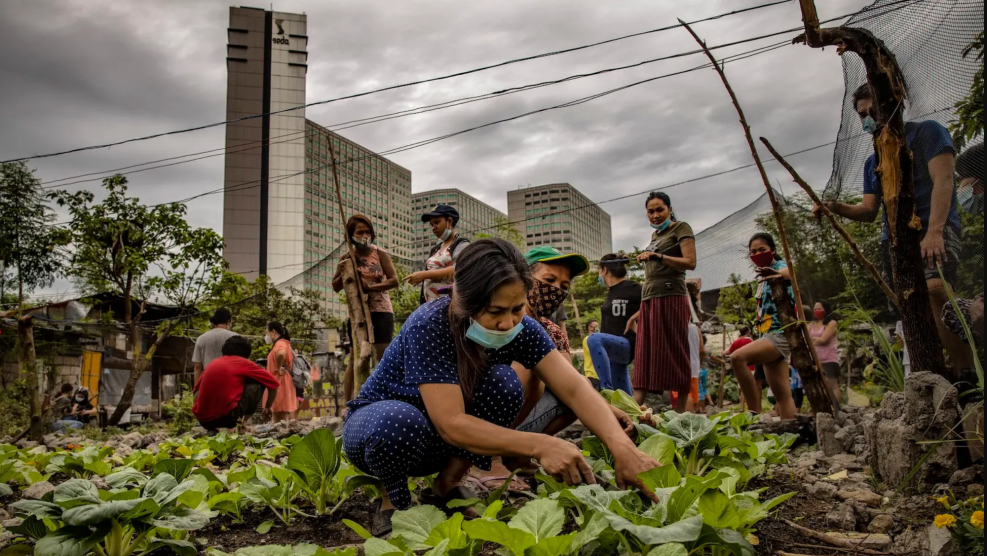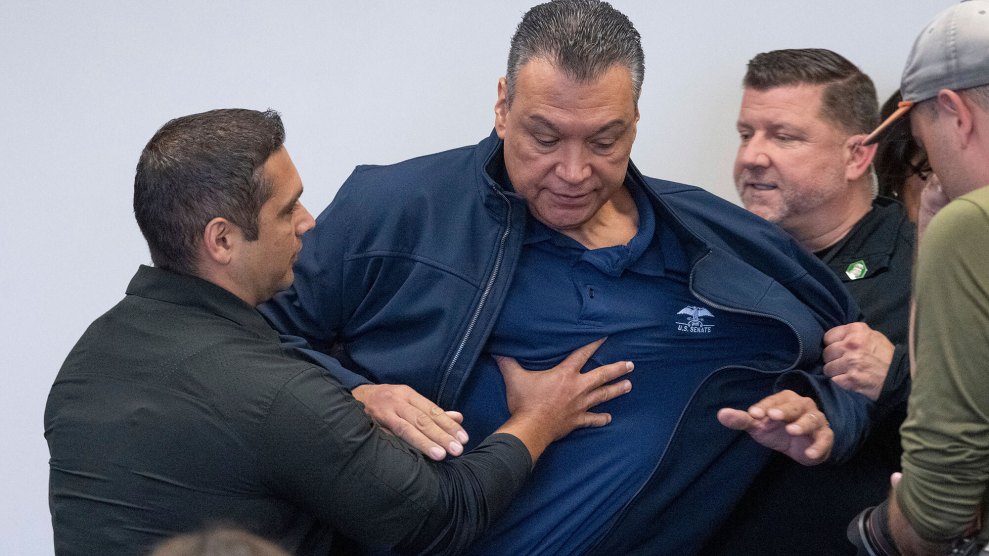Article created by Foreign Policy in Focus.
Once a year or so, the topic of poverty climbs onto the agenda for the developed world. Poverty was a theme at last year’s Group of 8 (G8) meeting, and it will likely come up again next year when the United States, Canada, Japan, Britain, Russia, Germany, France, and Italy sit down in Berlin to divvy up the global economy. But this past weekend in St. Petersburg, energy policy (and the Middle East) dominated the G8 discussions, and the topic of poverty barely surfaced.
The venues shift, the faces at the table change, but the hard facts about hunger and privation are not much different than they were a decade ago. In some cases the situation has gotten worse.
- Over 90% of urban populations have no access to safe drinking water and, by next year, more than half of the world will live in cities. The slums of Mumbai have more people than the entire country of Norway.
- One third of the world’s population—2.3 billion people—have no access to toilets or latrines, a major reason for the 13 million annual deaths ascribed to water-borne diseases.
- Almost 47% of children in Bangladesh and India are malnourished. Life expectancy in most of Africa is less than 50 years, and in those countries ravaged by AIDS, less than 40 years.
- Hunger and malnutrition is worse in sub-Saharan Africa than it was a decade ago.
Back in 2000, the United Nations established a Millennium Development Goal to halve global poverty by 2015. The G8’s enormous wealth, along with its dominance in world trade, was to play the key role in this worldwide assault on poverty and disease.
But six years into this war on poverty the goals are mired in a devil’s brew of self-serving economic policies, lethargic bureaucracy, and outright disingenuousness. Only South America and the Caribbean are even approaching the Millennium targets.
The Downside of Debt Relief
Meeting last year in Gleneagles, Scotland, the G8 pledged to prioritize Africa for debt relief, accelerated aid, and increased trade. A year later, most of those initiatives are bogged down. The only part of the program running on schedule is debt relief, which looks good on paper but translates into very little on the ground. Indeed, debt forgiveness ends up benefiting the donors much of the time.
For instance, the World Bank, the International Monetary Fund, and the African Development bank cancelled more than $40 billion in debts to nineteen countries. But according to the Financial Times, while the “face value” of the debt was $40 billion, “it cost rich countries just $1.2 billion a year to write off.”
Most of the G8 increase in aid—from $80 billion in 2004 to $106.5 billion in 2005—was in debt write offs. Very little of that money went toward upgrading water systems, improving disease control, or increasing food consumption.
If debt reduction is removed from the aid packages, German aid fell 8%, and France and Britain’s dipped 2%. And while U.S. foreign aid jumped 16%, if you subtract Iraq and Afghanistan, it actually declined 4%.
Debt relief is important and allows developing countries to divert interest payments toward upgrading their infrastructures. But it is also a cheap way for developed countries to fulfill their aid obligations.
When it comes to the White House and aid, what you see is not necessarily what you get. For instance, according to David Bryden of the Global AIDS Alliance, the Bush administration’s 2005 pledge to “double” aid to Africa translated into only 9% in new spending, and much of that will not appear until after 2008. The rest was funding to which the Congress and the administration were already committed.
Even when aid is promised, it may never appear. In the 2002 Monterrey Consensus—named after the city in Mexico where the conference took place—the G8 pledged that each member would deliver 0.7% of its gross national product in aid. But before the ink was dry, the Bush administration argued that the pledge was simply a “guideline,” even though paragraph 42 of the Consensus binds the signers to the formula.
And if aid does materialize, it may not arrive on time. A recent study by the British-based charity, Save the Children, found that the European Commission—the world’s second largest aid donor—along with key members of the G8, were consistently tardy in dispersing their assistance packages. The report blamed the delays on bureaucracy and inefficient administration.
“Delays in disbursing budget support can mean that teachers and health workers don’t get paid, or that important medical supplies and school textbooks don’t reach the children who need them,” Sarah Hague, Save the Children’s economic adviser, told the Financial Times.
The Problem in Washington
A major roadblock to improving the lives of billions of people is the refusal of the United States to consider opening its agricultural markets, even as it insists that developing countries open theirs. This is particularly important in Africa, where 50% of a country’s GNP may be in agriculture.
The U.S. government heavily subsidizes crops like corn, soy, cotton, and wheat, so that U.S. wheat sells for 46% below production cost, with corn at 20% below cost. If Brazil or South Korea were to try to do the same thing with steel, they would be accused of “dumping” on the international market.
The G8 members of the European Union (EU) argue that if developing countries remove their tariffs, they will be overwhelmed with cheap U.S. produce, which will drive their farmers out of business, encourage uneven regional development, and do very little to aid the poor.
Mexico and the North American Free Trade Agreement (NAFTA) is a case in point. Mexican fruit and vegetable exports increased 50% under NAFTA, enriching big landowners in the country’s north. But U.S.-subsidized corn is swamping small farmers in the south. Some two million farmers have left the land, and 18 million subsist on less than two dollars a day, accelerating rural poverty and helping to fuel the growth of immigration.
Mexican wheat production has fallen 50%, and U.S. imports now account for 99% of Mexico’s soybeans, 80% of its rice, 30% of its chicken, beef, and pork, and 33% of its beans. When Mexican cattle growers switched from sorghum to cheaper U.S. corn, they put the local sorghum industry out of business.
While the United States demands the removal of foreign barriers, it maintains tariffs on sugar and cotton, two crops that are, coincidentally, central to the key electoral battleground states of Florida and Texas.
According to the Financial Times, “new research suggests that the very poorest of the least developed countries (LDCs) could make big gains in exports and growth if the United States followed the EU and opened its markets to LDC.”
Free trade has been a disaster for most the developing world. In Latin America, where until recently the free trade “Washington Consensus” held sway, growth from 1987 to 2002 averaged 1.5%. To put a dent in poverty, Latin America requires a growth rate of at least 4% or more.
The EU is also part of the problem. While it has been critical of U.S. intransigence on tariffs, the EU has kept out a number of LDC exports over health issues, and it subsidizes its farmers as well. In all, the developed world hands out nearly $1 billion in farm subsidies each day.
Reforming Food Aid
Food aid policy in the United States, for which the total 2005 budget was $1.6 billion, is largely dictated by an “iron triangle” of agribusiness, shipping magnates, and charity foundations. Studies demonstrate that the most efficient way to deliver aid is to purchase food locally rather than buy and ship it from the donor country.
But Washington insists that food aid must come from the United States, be shipped on U.S. carriers, and distributed by agencies like CARE and Catholic Relief Services. As a result, 60 cents out of every aid dollar goes to middlemen for transport, storage, and distribution.
Four companies and their subsidiaries, led by agri-giants Archer Daniels Midland and Cargill, sell more than half the food used by the Agency for International Development. Five big shipping companies dominate the transport side of the equation. And relief agencies, like CARE and Catholic Relief Services, generate half their budgets by selling some of the aid food.
Oxfam has long lobbied for putting cash directly into the hands of local farmers rather than handing it out to agricultural and transport corporations, but most U.S. aid groups support the current system and so has the U.S. Congress. CARE, however, recently broke ranks and endorsed the Oxfam initiative.
The recent G8 meeting largely tabled the issue for this year, but the problem is not going to go away. Poverty is an affliction of the underdeveloped world, but the solutions to it lie in altering the policies of the developed world.
















